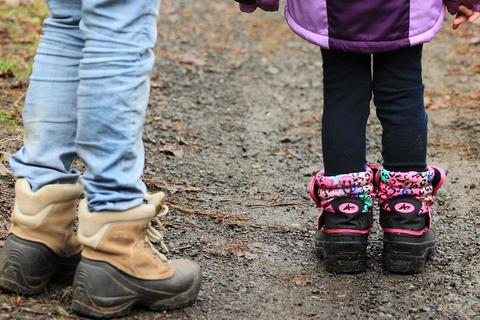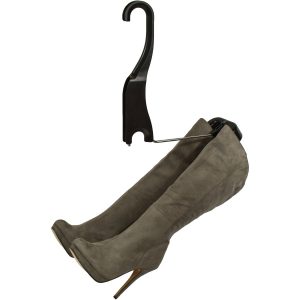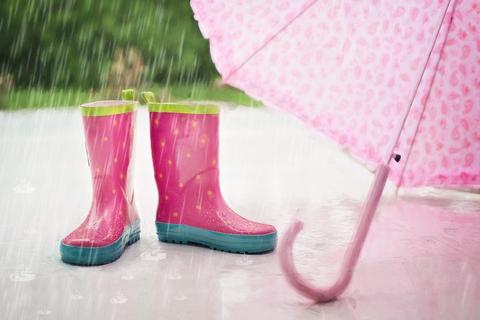
It’s been an unusually rainy spring season; that means lots of use for those rain boots, galoshes, wellies, rubber boots — whatever the particular vernacular in your part of the world.
Rain boots come in all shapes and sizes, so if you’re in the market for a new pair, do some research before you purchase any. Figure out what you’ll be using them for most: If it’s commuting with a lot of walking, you’ll need a boot that’s not only comfortable but that you can easily slip on and off at your destinations. If you do a lot of driving and lots of dashing between your car and your destination, perhaps a pair of rain shoes that you can slip on over your existing pair of shoes will do the trick. And if you’re going to be spending lots of time outside working, then your best will be a waterproof work boot or a comfortable, walkable pair of rain boots with added insulation.
Depending on your preference, you can purchase rain boots with or without laces. Boots with laces will also give you a fit that’s more customized to your foot and leg.
Since all rain boots are meant to be worn in the elements, they’ll be made of materials that are already impervious to water — rubber or synthetic rubber, neoprene, and the like. There’s no need, therefore, to waterproof rain boots when you purchase them. The exception is going to be if you’ve decided to convert a pair of work or hiking boots into boots that you only wear in the rain. Then, get some good waterproofing products made for the material that your boots’ constructed from, and do at least two coats of solid waterproofing before you take them out for a spin. You’ll need to repeat that process regularly, and especially if your boots get a good soaking. For more on rain care for traditional boots, visit Rain, Rain, Go Away… Rain Care For Your Boots.
Another option for those of you who live in warm/hot climates that have lots of rainfall: Rubber flip-flops. Because sometimes it’s just way too hot to put on a pair of huge rubber boots! Especially since rain boots should always be worn with a protective layer between your skin and the boots — whether’s that’s a pair of socks, tights, leggings, boot liners – you definitely need something there to prevent chafing. So rubber flip-flops can be a great option when it’s super hot outside but it’s pouring rain, especially if you don’t mind the feeling of rain on your toes.
Next up: Rain boot care. It’s much, much easier than leather boot care. (And if you’re in the market for that, we’ve got plenty of articles on that as well.)
- How To Take Care Of Your Distressed Leather Cowboy Boots
- Expert Leather Care for Your Boots
- How to Clean, Protect, Wear & Store Suede
- Exotic Leather Care
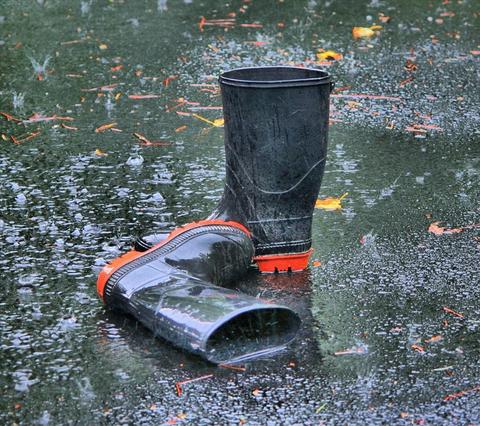
Rain boots are made to get messy and dirty. So don’t worry about avoiding any and all puddles. You can confidently wade right through them! The one thing to watch out for is to not make too big of a splash through those puddles, as rain and mud can fly up and then right back down your boot shaft. (If that happens, definitely rinse the insides out when you’re cleaning your boots, especially if any dirt or mud has gotten inside the boot).
Once you’re ready to clean your boots, you have two options: Wet cleaning or dry cleaning. If you have a slop sink, a sink in your basement, or don’t mind getting your bathroom sink or tub a bit dirty, you can rinse your boots off as soon as you get home. Give them a good hose down, and use a rag to get into any crevices.
Flip the boots over to clean the ridges on the soles, and remove any debris that’s caught in there — especially pebbles and stones, as these can not just damage the boots, but scratch your floors if you walk across them wearing boots with sharp things caught in the soles. And if the inside of your boot has gotten dirty, you can give them a good scrub as well. Your boots may have a detachable liner inside the sole – you can remove that and clean it and dry it out thoroughly.
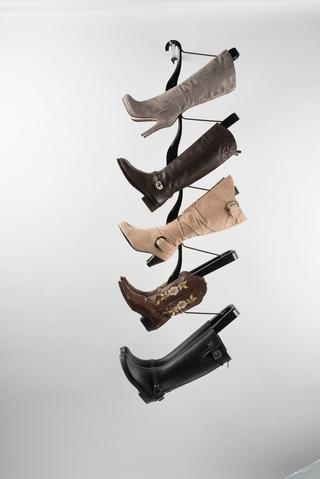
You can set your boots to dry on a towel on a floor; leave them standing in the sink you rinsed them in, or — of course! — hang them up on your Boot Butler. If they’re super wet, place a cloth under the Boot Butler to catch the water as it drains from your boots.
The second method of cleaning rain boots is a dry method. With this one, you’re going to let your boots dry naturally. We always caution against letting boots and shoes dry too close to heat sources such as radiators or campfires, and that’s also a huge no-no for rain boots: Heat will distort, crack, and even melt the material your boots are made of. You can place the boots on a rag or towel on the floor, or onto a boot tray. (We have more ideas like this in Organize That Mudroom.)
Once the boots are dry, grab a damp cloth. If your boots were super muddy before you set them out to dry, that mud will have dried onto the boots. You can now flake that mud off directly into the garbage using the cloth. Then, rinse the cloth or grab a fresh damp cloth, and clean off any remaining residue. Don’t forget to check the soles for any pebbles or grit that may have gotten caught in there.
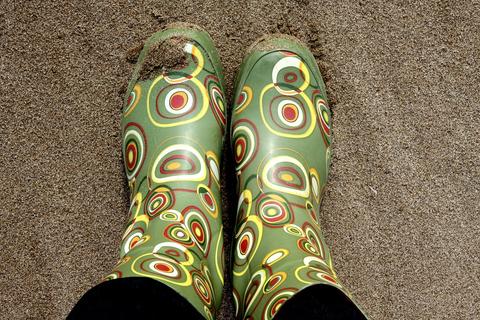
Now let’s get into storage. Rain boots are clunky! Especially if you have pairs that are knee-high or go to the mid-calf. So our Boot Butler is awesome at corralling multiple pairs. Plus, our product is great for drying out clean boots: Each boot hangs individually so that there’s nice air flow not just around the boot but inside it as well. And that’s a wonderful thing if your boots get a good soaking.
If you don’t want to hang up wet boots, you can also DIY a staging area for boots to dry off in, such as reconstituting a baking tray with raised sides to catch any moisture.
Or, go basic with a simple doormat that has a rubber bottom so that the moisture from the boots doesn’t seep out onto your carpet or wooden floors.
Once they’re dry, hang them up so that they’re ready for that next shower – and next set of rain puddles.

